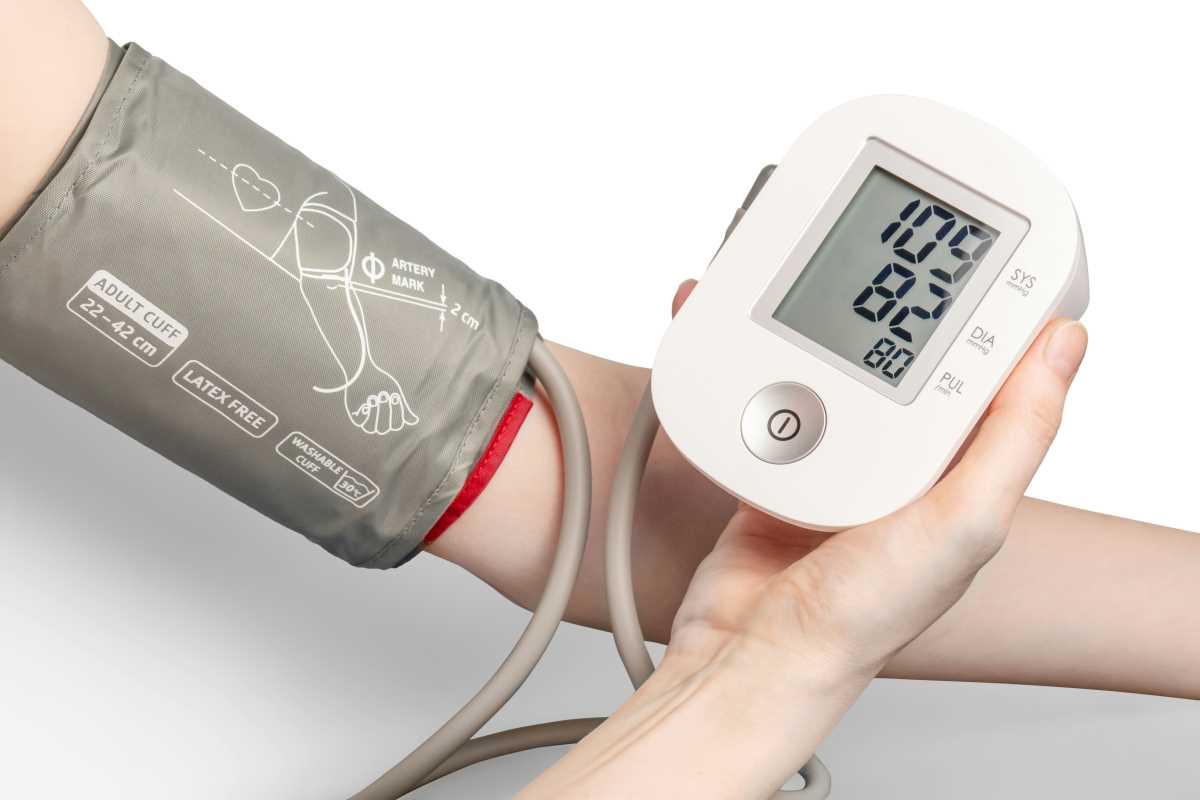When you walk into a doctor's office, you expect fair and equal treatment. You trust that your healthcare provider will listen to your symptoms, run appropriate tests, and make accurate diagnoses based on medical evidence. Unfortunately, research shows that unconscious biases can affect medical decisions in ways that impact how chronic conditions are diagnosed and treated. Understanding implicit bias in healthcare is crucial for patients and their families. These hidden biases can lead to serious consequences, including missed diagnoses, delayed treatment, and inadequate care for chronic conditions like diabetes, heart disease, and high blood pressure. By recognizing how these biases work, you can become a better advocate for your health and ensure you receive the care you deserve.
What Is Implicit Bias in Healthcare?
Implicit bias refers to unconscious attitudes and stereotypes that affect our understanding, actions, and decisions. Unlike explicit bias, which involves intentional discrimination, implicit bias happens automatically and without awareness. Healthcare providers, despite their training and good intentions, are not immune to these unconscious influences.
These biases form through repeated exposure to cultural messages, media representations, and social experiences. They operate below the level of consciousness, making them particularly challenging to identify and address. A doctor might genuinely believe they treat all patients equally while unconsciously making different assumptions about patients based on their race, gender, age, or socioeconomic status.
Common areas where implicit bias appears in healthcare include:
- Pain assessment and management
- Symptom interpretation
- Treatment recommendations
- Diagnostic testing decisions
- Patient communication styles
- Follow-up care planning
Research consistently shows that these biases can lead to significant disparities in healthcare outcomes. For example, studies reveal that Black patients are less likely to receive adequate pain medication, women's heart attack symptoms are more likely to be dismissed, and elderly patients may have their symptoms attributed to normal aging rather than treatable conditions.
How Implicit Bias Affects Chronic Disease Diagnosis
Chronic conditions often develop slowly and present with symptoms that can be subtle or easily attributed to other causes. This makes accurate diagnosis challenging under the best circumstances. When implicit bias enters the picture, it can create additional barriers to proper care.
Diabetes Diagnosis Disparities
Type 2 diabetes affects millions of Americans, but implicit bias can delay diagnosis in certain populations. Healthcare providers might assume that thin patients are less likely to have diabetes, even when they present with classic symptoms like excessive thirst, frequent urination, and unexplained fatigue.
Young adults also face diagnostic bias with diabetes. Providers might automatically assume Type 1 diabetes in younger patients or dismiss symptoms entirely, believing diabetes primarily affects older adults. This can lead to dangerous delays in treatment for young people with Type 2 diabetes, which is becoming increasingly common.
Heart Disease Recognition Problems
Heart disease remains the leading cause of death in the United States, yet implicit bias significantly affects how it's diagnosed and treated. Women, in particular, face substantial challenges in receiving timely and appropriate cardiac care.
Gender bias in heart disease diagnosis:
- Women's heart attack symptoms are more likely to be attributed to anxiety or stress
- Female patients receive less aggressive testing and treatment
- Women wait longer in emergency rooms when presenting with chest pain
- Healthcare providers may focus on emotional factors rather than physical symptoms
Age bias also affects heart disease diagnosis. Older adults might have their symptoms dismissed as normal aging, while younger patients may not be considered at risk despite having multiple risk factors like family history, diabetes, or high cholesterol.
Blood Pressure Management Inequities
High blood pressure, often called the "silent killer," affects nearly half of American adults. However, implicit bias influences how aggressively this condition is diagnosed and managed across different patient populations.
Racial disparities in hypertension care:
- Black patients may have their high blood pressure attributed to lifestyle factors without adequate medical investigation
- Providers might assume non-compliance with medication rather than exploring other causes of poorly controlled blood pressure
- Less aggressive treatment goals may be set for minority patients
Socioeconomic bias: Patients from lower-income backgrounds might receive less comprehensive blood pressure management. Providers may assume these patients cannot afford medications or follow complex treatment plans, leading to simplified but potentially inadequate care approaches.
Impact on Vulnerable Populations
Implicit bias doesn't affect all patients equally. Certain groups face higher risks of experiencing biased care, leading to worse health outcomes and increased healthcare disparities.
Racial and Ethnic Minorities
Research consistently shows that racial and ethnic minorities receive different care than white patients, even when controlling for factors like insurance status and income level. These disparities appear across multiple chronic conditions.
Key findings from medical research:
- Black patients are 40% less likely to receive appropriate diabetes medications
- Hispanic patients experience longer delays in cancer diagnosis
- Native American patients have higher rates of undiagnosed hypertension
- Asian patients may have their mental health symptoms overlooked due to stereotypes about emotional expression
Women's Health Challenges
Gender bias in healthcare has deep historical roots and continues to affect women's care today. Women's symptoms are more likely to be attributed to emotional causes, leading to delayed or missed diagnoses of serious chronic conditions.
Specific challenges women face:
- Heart disease symptoms dismissed as anxiety or hormonal issues
- Autoimmune conditions misattributed to stress or depression
- Pain levels underestimated or undertreated
- Longer wait times for specialist referrals
Low-Income Patients
Socioeconomic bias affects healthcare delivery in numerous ways. Providers might make assumptions about patients' ability to follow treatment plans or access care based on their perceived financial status.
Common biases affecting low-income patients:
- Assumptions about medication compliance
- Less time spent explaining treatment options
- Reduced likelihood of receiving preventive care recommendations
- Attribution of health problems to lifestyle choices rather than medical causes
Elderly Patients
Ageism in healthcare can prevent older adults from receiving appropriate diagnosis and treatment for chronic conditions. Providers might attribute symptoms to normal aging rather than investigating potentially treatable conditions.
Age-related diagnostic challenges:
- Symptoms dismissed as normal aging
- Less aggressive treatment approaches
- Reduced screening for certain conditions
- Assumptions about quality of life preferences
The Ripple Effects of Biased Care
When implicit bias influences chronic disease diagnosis, the consequences extend far beyond the initial medical appointment. Delayed or missed diagnoses can lead to serious complications that might have been preventable with earlier intervention.
Physical Health Consequences
- Disease progression: Chronic conditions typically worsen without proper treatment. A delayed diabetes diagnosis allows blood sugar levels to remain high, increasing the risk of complications like nerve damage, kidney disease, and vision problems.
- Emergency situations: Undiagnosed or poorly managed chronic conditions often lead to emergency room visits and hospitalizations. These acute episodes are more expensive and traumatic than ongoing preventive care.
- Medication complications: When chronic conditions aren't properly diagnosed, patients might receive inappropriate medications or miss opportunities for life-saving treatments.
Mental and Emotional Impact
- Patient frustration: Repeated visits without adequate answers can leave patients feeling dismissed and frustrated with the healthcare system.
- Loss of trust: When patients feel their concerns aren't taken seriously, they may lose trust in healthcare providers and avoid seeking future care.
- Self-doubt: Patients might begin to question whether their symptoms are real or significant, leading to delayed self-advocacy and care-seeking.
Financial Burden
- Increased costs: Delayed diagnosis often leads to more expensive treatment options and emergency care.
- Lost productivity: Unmanaged chronic conditions can affect work performance and lead to missed days.
- Family impact: When one family member has undiagnosed health problems, it affects the entire household's well-being and finances.
Strategies for Reducing Implicit Bias
While implicit bias presents significant challenges, there are proven strategies for reducing its impact on healthcare delivery. Both healthcare systems and individual patients can take action to promote more equitable care.
Healthcare System Changes
- Mandatory bias training: Many hospitals and clinics now require staff to complete implicit bias training. These programs help providers recognize their unconscious biases and develop strategies for making more objective clinical decisions.
- Standardized protocols: Using evidence-based guidelines and standardized assessment tools can reduce the influence of subjective impressions on diagnostic decisions.
- Diverse healthcare teams: Increasing diversity among healthcare providers can help reduce bias and improve cultural competency in patient care.
- Quality improvement initiatives: Regular monitoring of health outcomes by patient demographics can identify areas where bias might be affecting care quality.
Technology Solutions
- Clinical decision support systems: Computer programs can prompt providers to consider certain diagnoses or recommend specific tests based on patient symptoms, reducing reliance on intuitive judgments.
- Structured documentation: Electronic health records with standardized fields can help ensure all relevant symptoms and risk factors are documented and considered.
- Bias interruption tools: Some healthcare systems use technology to flag when treatment decisions might be influenced by bias, encouraging providers to reconsider their approach.
Patient Advocacy Strategies
As a patient, you can take steps to protect yourself from biased care and ensure you receive appropriate attention for your health concerns.
- Be persistent: If you feel your symptoms aren't being taken seriously, don't hesitate to seek a second opinion or ask for additional testing.
- Prepare for appointments: Write down your symptoms, questions, and concerns before your visit. Bring this list to ensure all issues are addressed.
- Bring support: Consider having a family member or friend accompany you to important appointments, especially if you're concerned about potential bias.
- Know your family history: Understanding your genetic risk factors can help you advocate for appropriate screening and testing.
- Ask direct questions: Don't be afraid to ask why certain tests aren't being ordered or why specific treatment options aren't being considered.
- Document everything: Keep records of your symptoms, treatments, and provider interactions. This information can be valuable if you need to seek care elsewhere.
Moving Forward: Building Better Healthcare
Addressing implicit bias in healthcare requires ongoing effort from providers, healthcare systems, and patients. While progress is being made, there's still work to do to ensure everyone receives fair and appropriate care for chronic conditions.
What you can do as a patient:
- Stay informed about your health conditions and treatment options
- Build strong relationships with healthcare providers who listen to your concerns
- Advocate for yourself and your family members
- Report concerns about biased care to patient relations departments
- Support healthcare organizations that prioritize equity and inclusion
Supporting systemic change:
- Advocate for diverse healthcare leadership in your community
- Support research on health disparities
- Encourage friends and family to seek regular preventive care
- Vote for policies that promote healthcare equity
Disclaimer: The content provided on SuperHealthyTips is for informational and educational purposes only. This information is not intended to be a substitute for professional medical advice, diagnosis, or treatment.
 (Image via
(Image via





